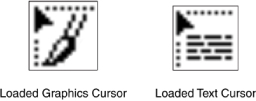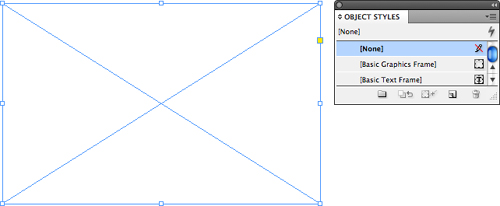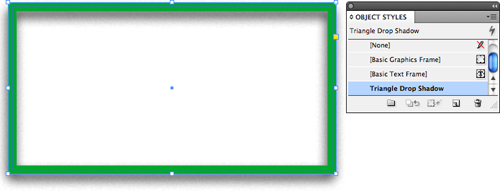The frame/shape relationship can be confusing to new
InDesign users, especially those coming over from QuarkXPress. I can’t
tell you how many times I’ve been asked, “Why does the Tools panel have
two rectangles? Which one is for text and which one is for graphics?
How do I draw a text box?”
By definition, a frame is a container that holds either an image or a body of text. A shape is not intended to be a text or image container, but can be converted into one.
In Quark language, this means that the box tool with
the X in it (the Rectangle Frame tool) is used to draw picture boxes.
The box without the X (the Rectangle tool) is used for drawing shapes.
Finally, text boxes can be drawn with the Type tool.
In InDesign, both rectangle tools (frame and shape)
can be used to draw a picture box or a text box. Frames can be shapes
and shapes can be frames, and you do not have to draw a box first
before placing an image. Despite this flexibility, you should be aware
of some differences when working with the frame and shape tools.
Frames
Frames are containers that can hold either a placed
image or a body of text. If you prefer to draw frames first before
placing content in them, you can do so with the Rectangle, Ellipse, or
Polygon Frame tools, and also with the Type tool. If you prefer to
paste content first and resize frames later, you can place graphics (or
text) by applying the File, Place command (Cmd-D or Ctrl+D). When you
do so, InDesign automatically draws a frame for you when you click the
loaded cursor anywhere on the page.

You can also apply saved attributes, called object styles, to newly drawn empty frames . By default, whenever you create a frame using
any of the Frame tools, InDesign automatically applies the None object
style to it.

Shapes
You draw shapes using the Rectangle, Ellipse, or
Polygon tools. You can draw custom shapes by using the tools available
in the Pen toolset, or draw freeform shapes with the Pencil tool.
You can save assigned shape attributes as object
styles and later apply them to other shapes or frames (empty or with
content). InDesign also enables you to select an object style from the
Control panel Object Styles drop-down list, or from the Object Styles
panel, and apply it to a shape as you draw it with the tool . This is something you cannot do when working with frames.

Whenever you create a shape using any of the Shape
tools, InDesign automatically applies the document default object style
to it. When you first launch InDesign, the default object style is
[Basic Graphic Frame]. To select a different object style to use as the
document default, deselect all objects (Edit, Deselect All) and click
an object style name from the Object Styles panel or from the Control
panel Object Styles drop-down list.